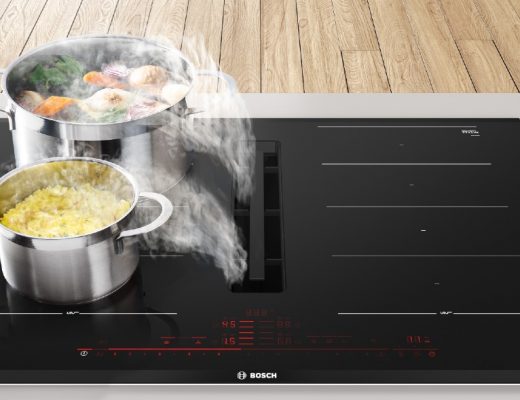A versatile, long-lasting surface that imitates luxury materials, resists stains and is ideal for kitchens and bathrooms – what’s not to love? KBB journo Vicki Evans explores how you can make porcelain work in your home…
It’s fair to say porcelain – a material with a history spanning a mere 2000 years – is having a bit of a moment. Its affordability, durability, and versatility (both indoors and out) make it the perfect solution for many homeowners with renovation projects right now especially as, thanks to advanced printing technologies, it can replicate the look of natural stone and real wood, offering more practical and budget-friendly alternatives to the real deals.

Benefits of porcelain surfaces
It comes in a vast variety of sizes, colours, styles and formats and can be used in a plethora of places. One of the key areas it can be found in is the kitchen – from worktops and splashbacks to flooring.
Gavin Shaw, managing director at Laminam UK, gives us the lowdown: “Unlike some other surface materials, such as marble, porcelain has minimal porosity and is extremely stain and scratch resistant. And, being unaffected by extreme temperature changes, there’s no need to worry about the surfaces warping.
“Additionally, if you have an outdoor kitchen, it can endure cold winters, plus, the sun won’t fade the colour, as it is UV resistant too.”

Porcelain is also proving to be a favourable alternative to engineered quartz worktops with high-silica contents – after recent findings revealed health concerns for fabricators inhaling the dust created from cutting the stone in uncontrolled and unregulated environments. (It’s worth noting there is no danger to homeowners once high-silica stone products have been installed).
Practicalities
Abbas Youssefi, director of Porcelain Superstore, gives some tips for porcelain worktop installation. “We recommend choosing a large slab rather than smaller tiles, to give it the appearance of a solid stone worktop, eliminating grout joints for a seamless, contemporary surface,” he says.

We suggest using the same design for your splashback, too – perfect for the current trend of stone drenching (a look where homeowners design a space with singular high-end materials covering walls, floors, and countertops as a key décor feature that exudes a luxurious and harmonious space.)
Porcelain is also naturally slip-resistant, perfect for bathroom flooring – although we recommend checking your chosen design’s slip rating to see how suitable, and safe, it is. It’s also ideal for anything from shower walls to sanitaryware.

As Ben Willis, a tile specialist at Willis & Stone, reassures, “Porcelain tiles are hypoallergenic and resistant to bacteria and mould growth, ensuring a healthier environment in kitchens and bathrooms.”
The best part? Cleaning is a breeze, requiring hot, soapy water to maintain its sparkling appearance. It’s a sustainable option, too: it uses fewer raw materials, with some options incorporating recycled porcelain, ceramic or glass. And, at the end of its lifecycle, it can be repurposed for other uses as well, such as being broken down for aggregate.

Quality is key
If you’re thinking of including porcelain in your home, remember – quality matters. Investing in high-quality products ensures durability and longevity. Coatings, finishes and inkjet printing processes vary by brand and can significantly impact the appearance and lifespan of the product.
With this in mind, we always recommend visiting suppliers and showrooms to see and feel your chosen products before purchasing. But the hardest part? Trying to decide on just one design…


Featured image: Add a little bit of Moroccan-style design with a gorgeous vintage green and off-white tile by Tile Mountain. Leeds Green is priced from £23.99 per sq m.






